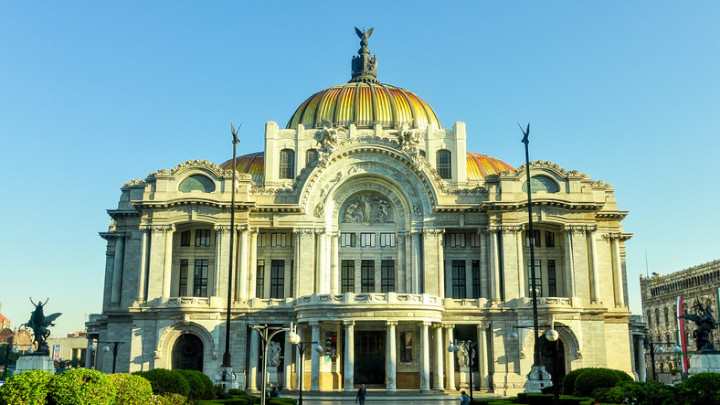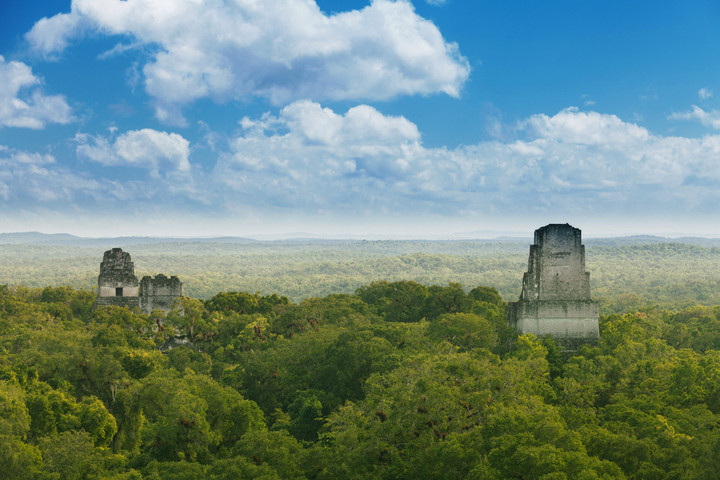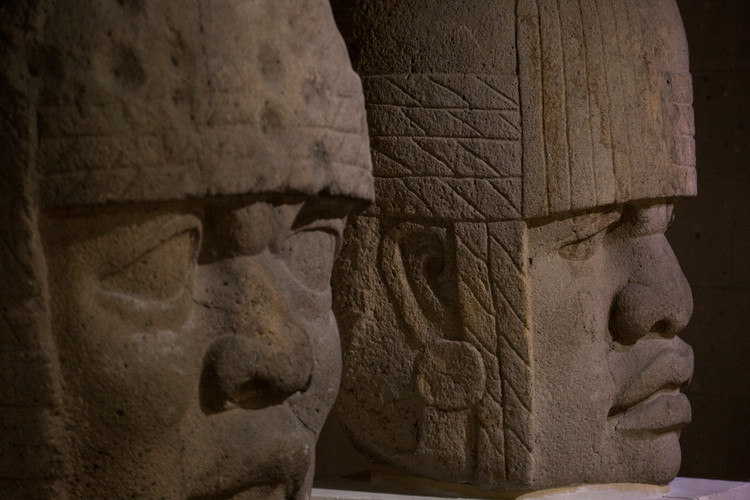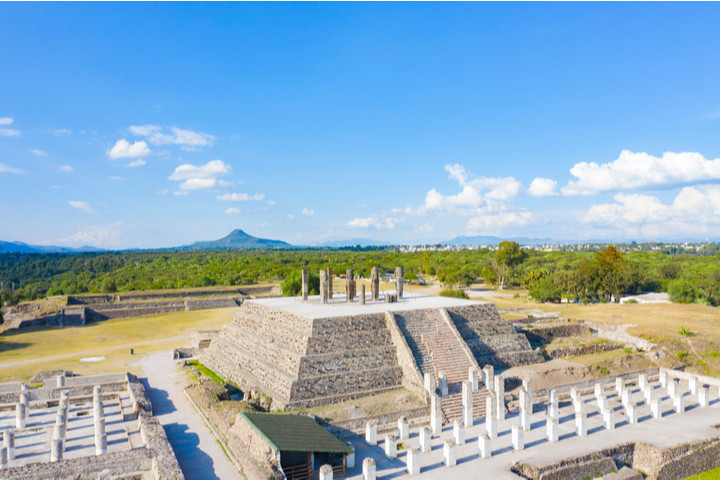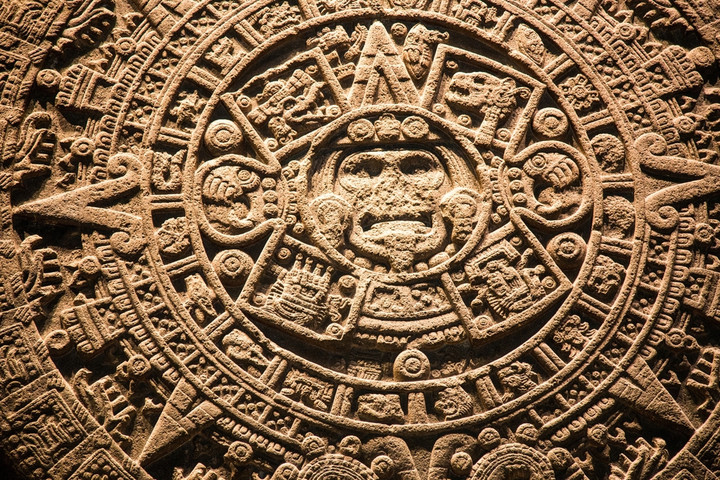Between ancient cities, heavenly beaches and impressive natural sites, discover our selection of the most beautiful places to discover in Mexico!
This travel guide will present the best places to visit when travelling to Mexico. The tourism is very important and very developed for the Mexican them self, but also for the numerous international travelers.
Mexico is located in the southern part of North America. It is bordered on the west by the Pacific Ocean and on the east by the Atlantic Ocean. These coasts have many wonderful beaches of white sand. The country offers also rich archaeological sites of the Maya and Aztec civilizations. Travelers will also enjoy the spectacular natural wonders of Mexico with its forests, volcanoes and canyons.
Did you have always wanted to visit Mexico, but don’t know where to start? One trip will be not enough to discover all the wonders of this huge and beautiful country, but we will try to help you with selecting the must seen place in Mexico.
Things to do in Mexico
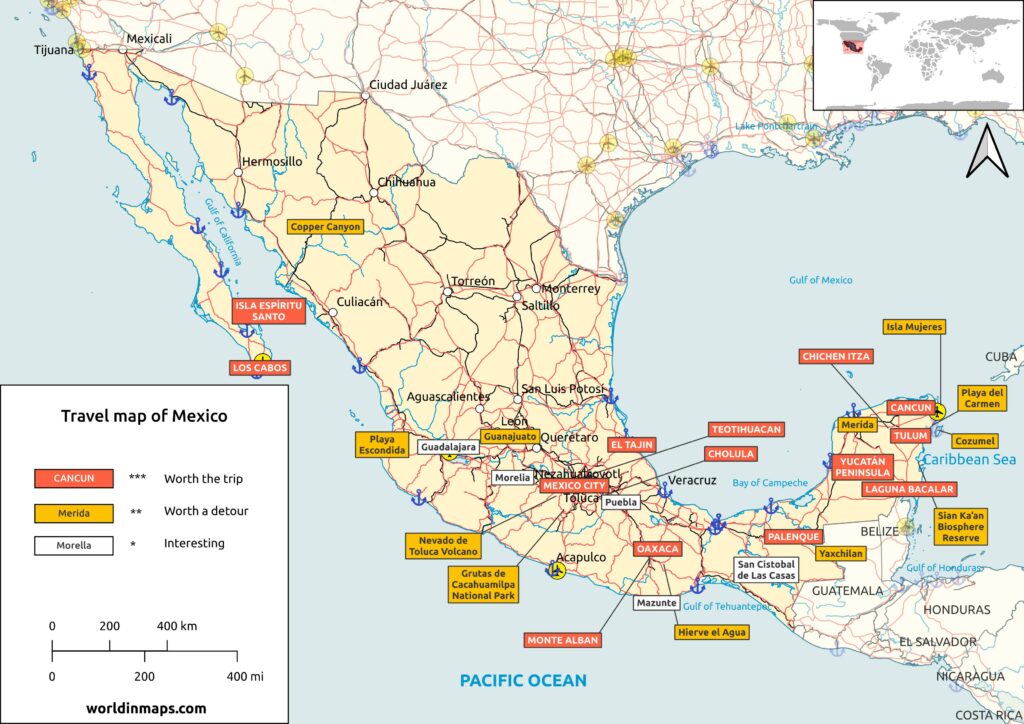
The Yucatan Peninsula***
The peninsula of the Yucatan is located on the gulf of Mexico. It has the most beautiful beaches of Mexico with turquoise water and white sand. The Yucatan Peninsula is the most touristic region of the country and it is in this region that the very touristic coast of Cancun is located, but also the Playa del Carmen. The Yucatan is also the region of the ancient Maya civilization and so there is numerous archaeological site to visit, under which the impressive Chichen Itza and Tulum.
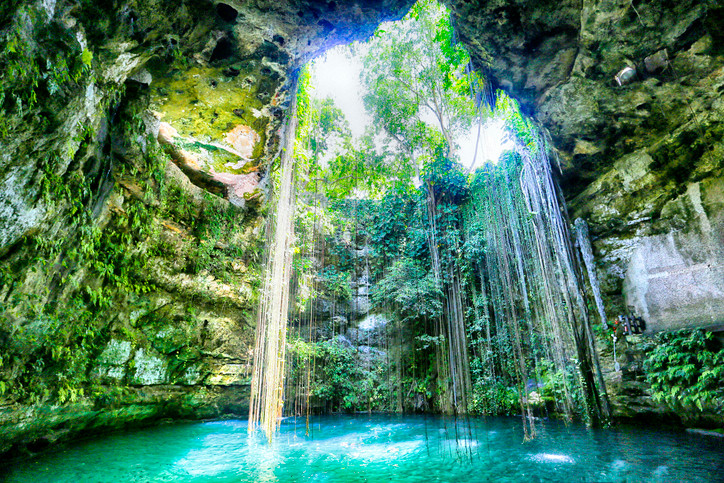
The peninsula of the Yucatan is also known for its cenotes that are natural wells of fresh water, or sometimes partially salty water. These wells are formed by the collapse of limestone rocks located above a cave or an underground river. The cenotes were considered as sacred by the Mayan and by consequence sacrifice and rituals were taking place. Around 10 000 of this cenotes are present in the Peninsula of the Yucatan. The most impressive are:
- Gran Cenote near Tulum
- Dos Ojos also near Tulum
- Xkeken near Valladolid
- Zaci also near Valladolid
- Azul near Puerto Aventuras
- Ik Kil near Chichen Itza
- Noh Mozon near Pixya
- Angelita near Quintana Roo
Chichen Itza***
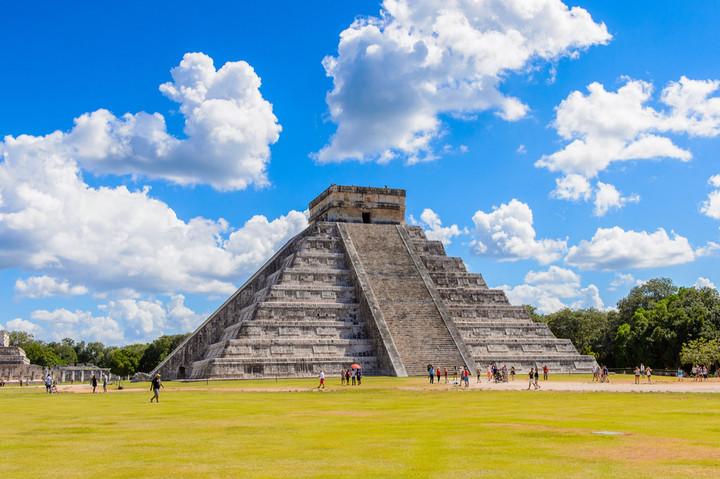
This archaeological site is located between Merida and Cancun. The Chichen Itza is an ancient Mayan city. The city was probably a major religious center for the Mayan. The city is located in a very arid region, but there are many natural well with underground water that has allowed the settlement in this region. The name of the city comes from this particularity. Indeed Chi Chen mean near the well and Itza is the name of the first tribe that has built the city in AD 450. The city has then been occupied by the Mayan and then finally the Toltecs.
Since 2007, this archaeological site is one of the seven new wonders of the world.
Cancun***
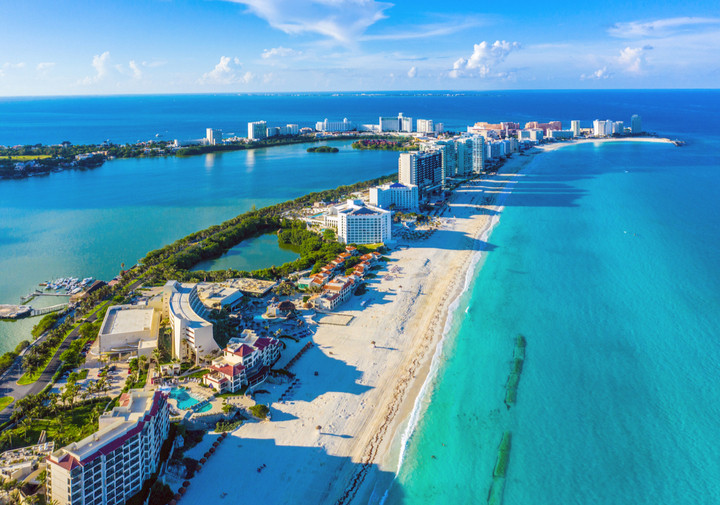
One of the world most famous tourist destination, Cancun is located on the Caribbean coast of the Yucatan Peninsula. Everything is made to please the tourist with a complete package of wonderful beaches, hotel complex, Mayan ruins and nightlife.
The white sand and its turquoise waters are the top attraction of tourists. Next to it, Cancun offers a wide range of activities like snorkeling, diving, …
The downtown of the city offers more authentic and historical architecture. And around the cities some small Mayan archaeological sites can be found like the El Meco and El Ray.
Tulum***
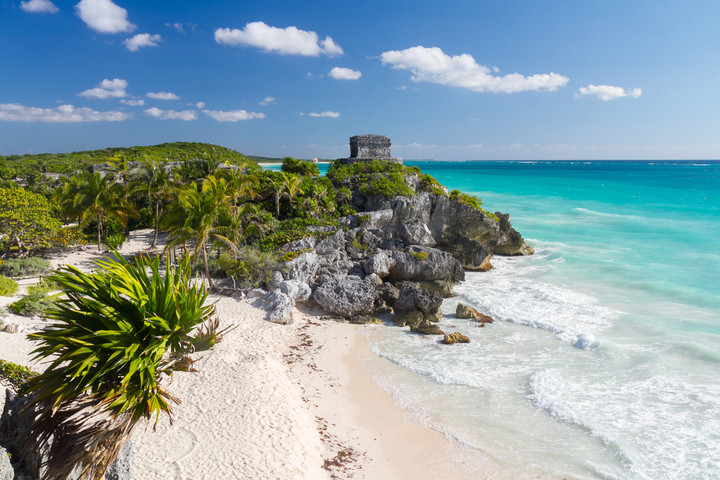
Tulum is an old Maya city built on the seashore of the Yucatan peninsula. It is also the only Mayan City built along the seashore. It is in this city that the Maya saw the first Spanish caravels arriving in AD 1518. The city is bordered by a giant beach of white sand and turquoise Caribbean water that extends for kilometres without any constructions. This very popular place is really magical with its swimming spot with the Mayan archaeological site as a backdrop.
Some of the most beautiful cenotes of Mexico are also located around this little part of paradise of the Caribbean coast.
Isla Mujeres**
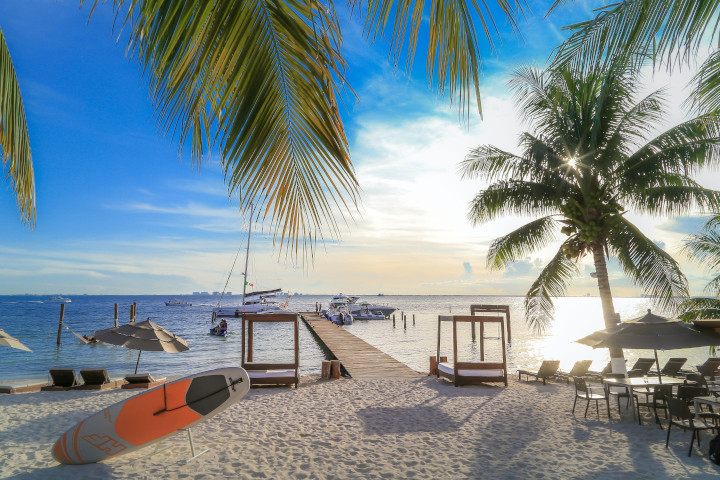
This little island of 8 km (5 mi) by 4 km (2.5 mi) is located along Cancun. It attracts tourist from all the world for its wonderful beaches and it is the perfect place to rest one or two days between the visit of all the archaeological sites located in this region.
Playa del Carmen**
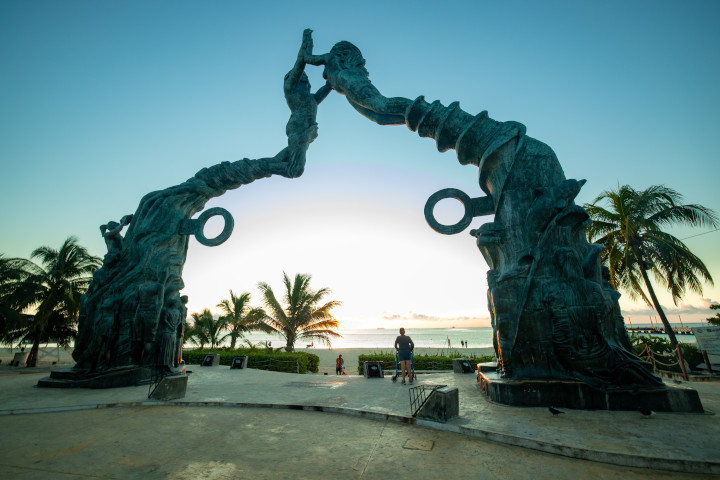
This formerly little fishing village has recently expanded into a real resort town with beautiful relaxing beaches. Located within the Riviera Maya region, Playa del Carmen is a cruise stop because the ease to reach popular spot like Sian Ka’an Biosphere Reverse and the reefs that are excellent places for snorkeling and diving.
Merida**
Founded in AD 1542, this big city is the capital of the Yucatan state.The wonderful historical center of colonial style is very well preserved and the palace of a former Conquistador is also worth to be seen. Around the city you will find some natural reserve and cenotes hidden in the middle of the jungle, but also Mayan archaeological sites.
Cozumel**
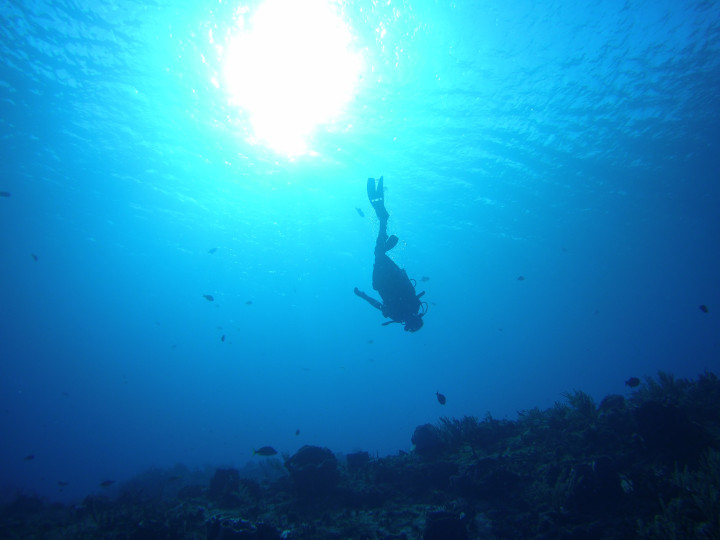
This island is located in the sea of the Caribbean and it has the reputation to have one of the most beautiful seabed of the world. Making it an ideal place to dive. The island is also known for surfing and parasailing because of the ocean current and wind conditions, which make it not an ideal destination for swimming. But many beach hotels have a swimming pool.
The island has also two Mayan archaeological sites, San Gervasio and El Caracol. The first archaeological site is from AD 300 and the second is from the 13th-16th century AD.
The island offers also nature trails in the Chankanaab National Park.
Sian Ka’an Biosphere Reserve**
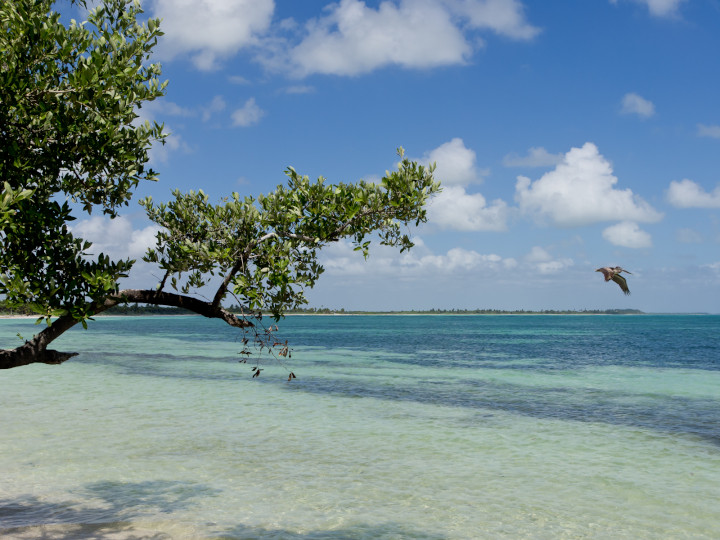
This reserve is located next to the city of Tulum and it listed as a UNESCO World Heritage Site. The reserve is a wonderful natural park. A real paradise for birds, fauna and flora!
Laguna Bacalar***
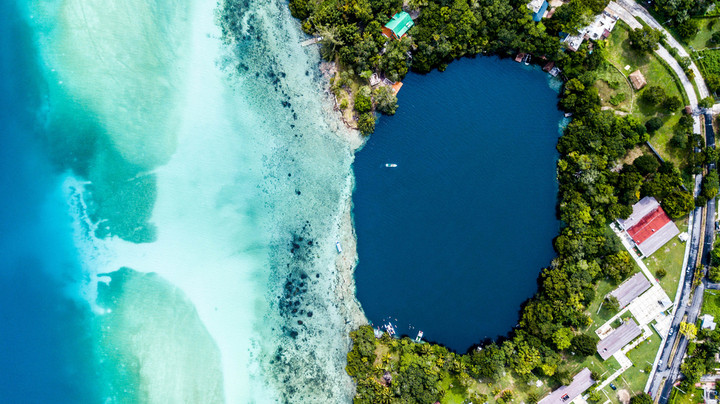
The Laguna Bacalar is a lake of about 70 km (45 mi) long with a wide variety of blue waters. Indeed, the color of the water goes from turquoise to dark blue in function of the sunlight and the depth of the water. This place is the perfect location for relaxing, kayak or biking along the laguna. Some cenotes are present around the laguna, like the Cenote La Bruja.
Palenque***
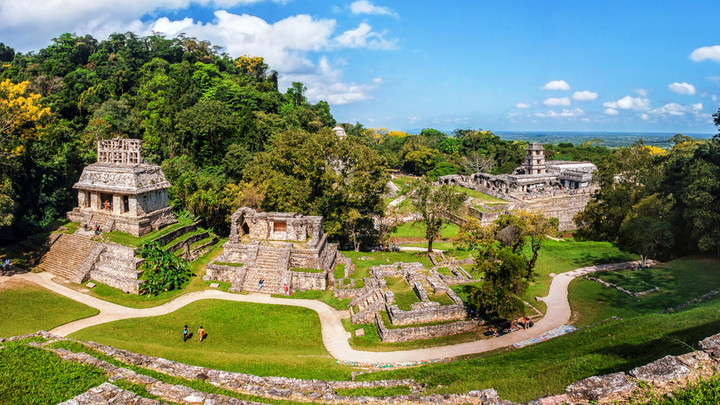
In this place is located one of the biggest city of the Mayan civilization, but also a national park listed as a UNESCO World Heritage Site.
Palenque is located at the border of the jungle and also of the Chiapas mountains. The ancient Mayan city is partially recovered by the vegetation and only a part of it is still visible. It is a wonderful place that is worth to visit.
Oaxaca***
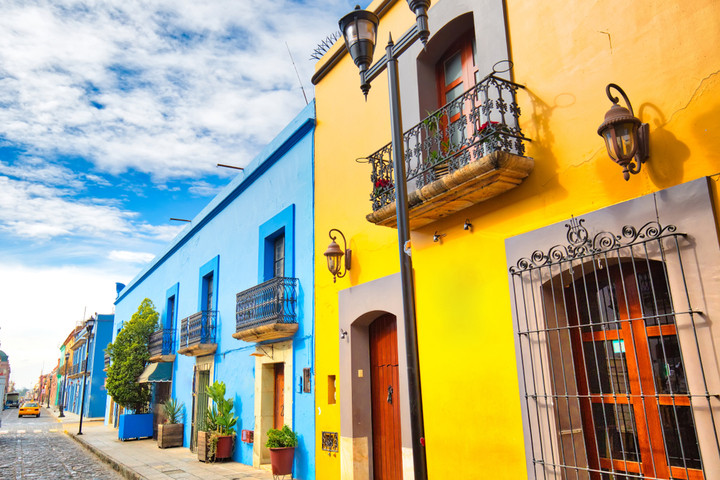
This city is full of charm with its colonial colored homes. The city is also the birthplace of one of the oldest prehispanic civilization: the Zapothecs. Around the city, travelers will find 2 majors archaeological site of this civilization: Monte Alban and Mitla.
For the lovers of local culture, they will find around the city numerous little Indian village where you will find weekly markets.
Also located next to the city of Oaxaca, the wooded hills of the Sierra Norta are perfect for hickers.
Monte Alban***
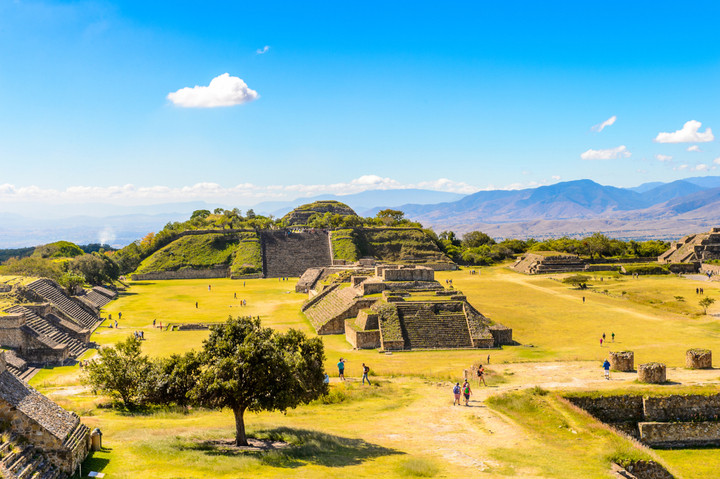
This exceptional archaeological site was the political, economical and spiritual center of the Zapothecs. The city was built at the 6th century BC. It is located at an altitude of 2 000 m (6 500 ft) and it dominates all the valley of Oaxaca. Monte Alban is one of the biggest archaeological site of Mexico and it is listed as UNESCO World Heritage Site.
Cholula***
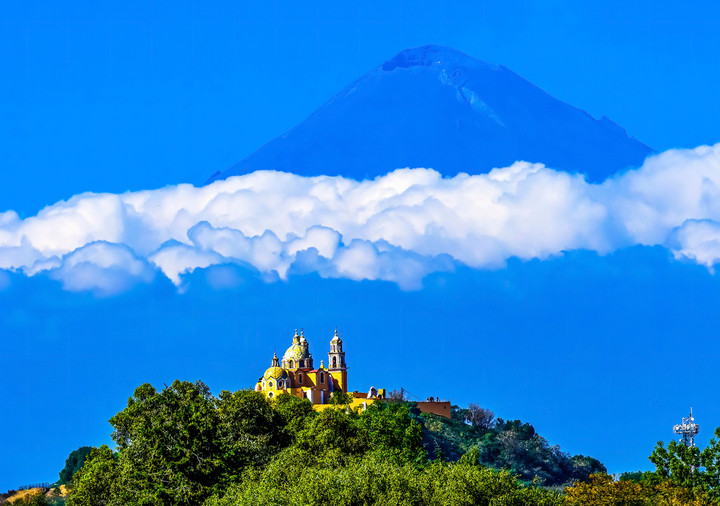
This village is located in altitude, at the foot of the still active Popocatepetl volcano. This village is fascinating with its big pyramid, the biggest in the world. At the top of the hill that covered this pyramid, we have the Nuestra Señora de los Remedios church that dominates the plain. It offers an astonished spectacle with the volcano in the background.
Mexico city***
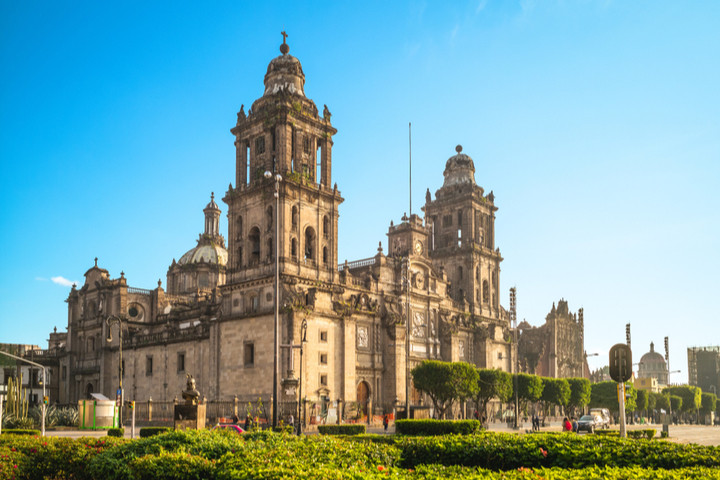
It is the capital city of Mexico and it is a top ten of the most populated agglomeration in the world. It has an impressive size of 50 km (30 mi) by 30 km (20 mi). The city also impressed by its altitude of 2 200 m (7 250 ft). Even though you will have to travel in very crowd metro or bus and being patient in the traffic jam, Mexico has no lacking in charm. The historical center (around Zocalo) is listed as UNESCO World Heritage Site and will make the happiness of lovers of culture and history with its museums, old churches and buildings of baroque, neoclassical and pseudo-colonial styles.
Teotihuacan***
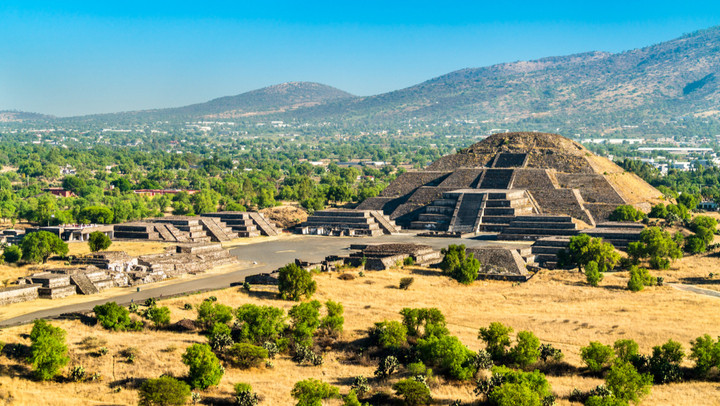
Located 50 km (30 m) northeast of Mexico City, this city is one of the most important Pre-Columbian archaeological sites in the world. The city has some of the biggest Mesoamerican pyramids. The city was built in 100 BC and had its golden age at the first half of the 1st millennium AD. Teotihuacan was the biggest city of all the Pre-Columbian America and with its 200 000 inhabitants, one the biggest in the world. The pyramids of the sun and of the moon are still visible and are still so impressive.
El Tajin***
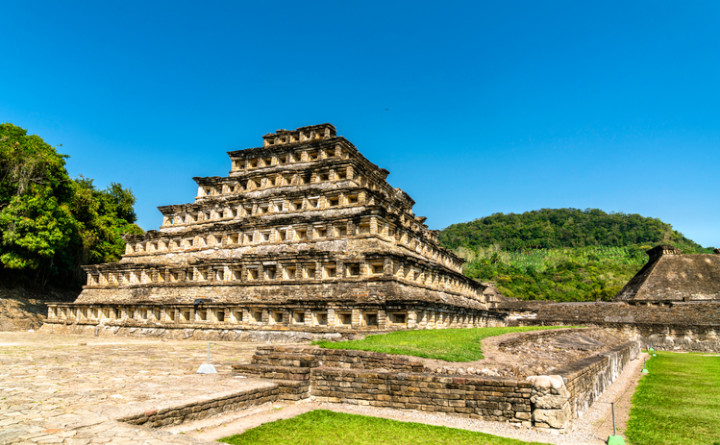
This Pre-Columbian archaeological site, listed as UNESCO World Heritage Site, is one the most important and best conserved. It was an important center of the Totonac culture and the descendants of this tribe are still living in this region. El Tajin was founded at the 2nd century AD and has known its golden age between the 9th and 13th century AD. This pacific tribe was then under the submission of the Aztecs at the 15th century AD. Nowadays, around 50 buildings of this ancient city are still visible (which represent around 10% of the original site).
Isla Espíritu Santo***
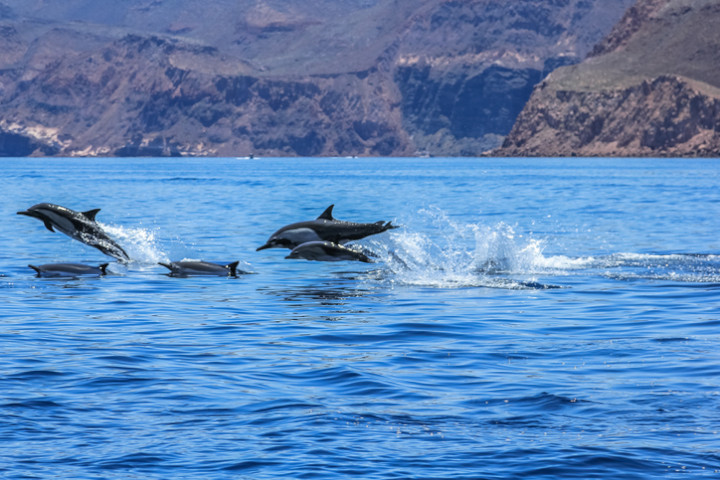
This uninhabited island in the Gulf of California is a Biosphere Reserve and an important ecotourism destination. With all its outdoor activities, it is a place for adventurers. This wonderful island is a place of snorkeling to observe dolphins, whale sharks and sea lions. Indeed, the island is home to an important colony of sea lions.
The island is also a suitable place to practice kayaking. The island is also known to be the only known habitat of the black jackrabbit.
Los Cabos***
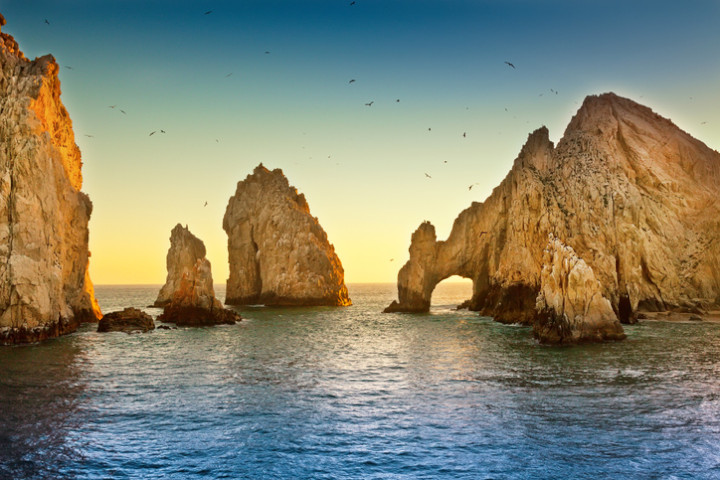
Located at the extreme southern end of the Baja California Peninsula, it is composed of 2 towns, Cabo San Jose and Cabo San Lucas, that are separated by 30 km (20 mi) known as the Corridor.
Cabo San Jose is a traditional colonial town with a relaxing ambiance. Cabo San Lucas is a modern touristic city with resorts, restaurants and golf courses, but it offers also a plenty of water sports like snorkeling, diving and parasailing.
The arch of Cabo San Lucas is locally named El Arco which means the arch in Spanish. Located at the extreme southern end of the Baja California Peninsula, it offers a wonderful spectacle like pelicans plunging into the water. The place is very touristic and the Playa del Amor will be the perfect place for a rest. Enjoy also a little trip with the little boats, named pangas, to observe sea lions that can be spotted in this region. The seabed is also rich and the perfect place for snorkeling to observe colorful fishes.
Between the 2 cities, the corridor is composed of beautiful beaches with crystal clear waters and rich marine life.
Yaxchilan**
This ancient Mayan city is lost in the middle of the jungle in the Indian territory. To get to the city is a real adventure with a motorized canoe in the jungle. This site can be visited in one day from Palenque.
Hierve el Agua**
This incredible therms and falls are made of travertine rocks, but looks like real water falls. This geological wonder is located at about 70 km (45 mi) east of Oaxaca city.
Grutas de Cacahuamilpa National Park**
The National Park is best known for its cave system, which is known to be the largest in the world. The cavern has numerous wonderful stalactites and stalagmites of several meters. Outside the caves, the site proposes numerous outdoor activities like rappelling and rock climbing in the Limontitla Canyon, but also the exploration of underground rivers. There is also on the site a small botanical garden, a pool and a place to camp.
Nevado de Toluca Volcano**
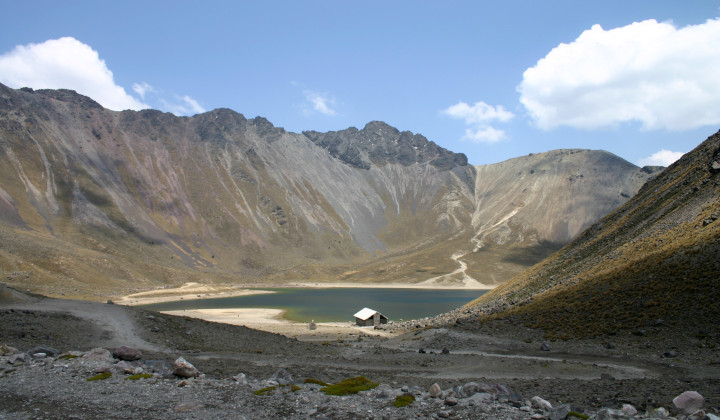
This stratovolcano is often known as the Xinantecatl and it is located near the city of Toluca, around 80 km (50 mi) west of Mexico City. With its elevation of 4 680 m (15 350 ft), it is the fourth highest peak of Mexico. The view of the crater is spectacular with its 2 lakes: the Sun Lake and the Moon Lake.
Guanajuato**
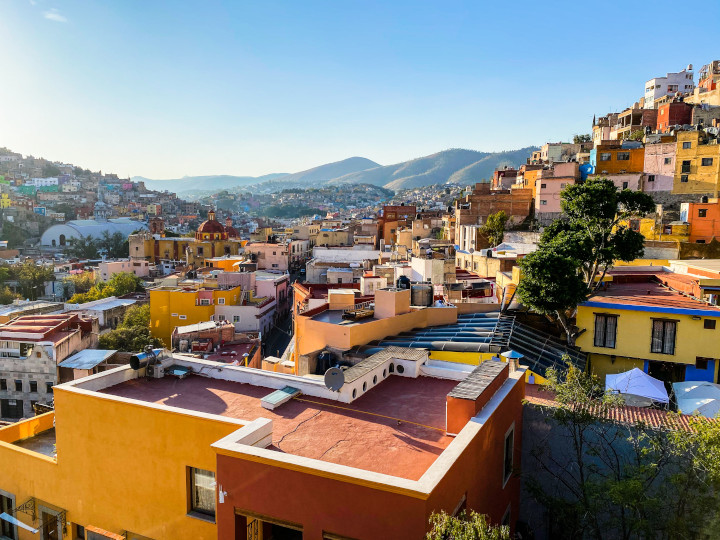
This city was founded in AD 1559 by the Spanish settles for the extraction of gold and silver in mines. They have built a wonderful historical center which is composed of beautiful places and colonial buildings. Not surprisingly, this historical center is listed as a UNESCO World Heritage Site. The city is also known for its network of tunnels that serve as roads.
To appreciate the exceptional view on all the city and its colored houses, it is recommended to climb to the top of the Pipila monument.
Playa Escondida**
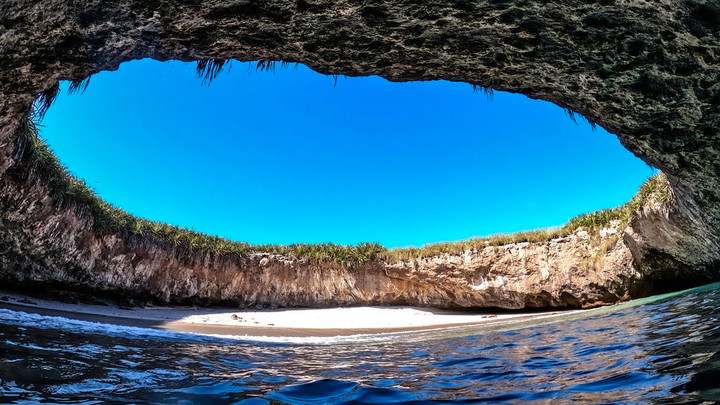
This incredible beach is located on the Marietas island. The beach is indeed hidden in an open cave and is only accessible at low tides after swimming across a cave. Really an exceptional place on earth and a postcard landscape.
Copper Canyon (Barrancas del Cobre)**
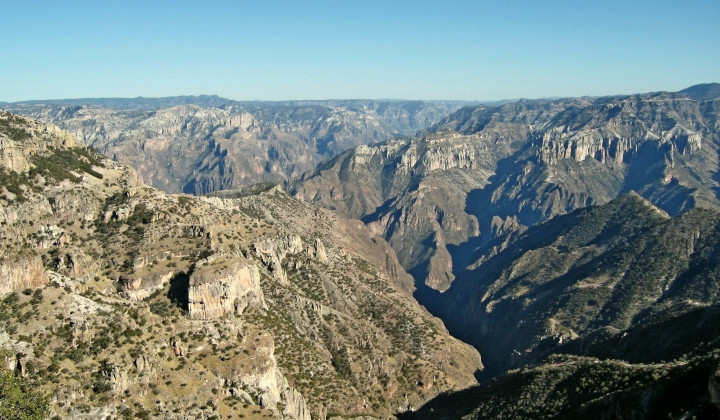
This Canyon is in reality form by a group of six distinct canyons in the Sierra Madre. The name of the canyon come from the copper / green color of the walls of the canyon. The best way to discover this region is to take the touristic train Ferrocarril Chihuahua al Pacifico, or also known as El Chepe, that link the city of Chihuahua and Los Mochis. This train runs 673 km (418 mi) and cross the Copper Canyon.
San Cistobal de Las Casas*
Located at more than 2 000 m (6 500 ft) of altitude, in the mountain of the Chiapas, this city is the oldest Spanish city of the region of the Chiapas. San Citrobal de Las Casas is a beautiful colonial-era town with narrow streets, arcades and low houses.
Mazunte*
Located in the Oaxaca region, Mazunte is a lovely little village located in a beautiful bay. The village is specialize in ecotourism and the protection of the turtles.
Puebla*
Founded in AD 1531, this city with over 2 million inhabitants is one of the most beautiful of Mexico and known to be the gastronomic capital of Mexico. Its center is a jewel of baroque architecture and is listed as UNESCO World Heritage Site.
Morelia*
This city is a beautiful colonial city with a historical center listed as UNESCO World Heritage Site.
Guadalajara*
With 3.5 million inhabitants, it is the second biggest city of Mexico. The historical center of the city is composed of wonderful buildings of the colonial era and is perfect for a walk. Guadalajara is also the birthplace of the mariachis, the famous musicians wearing a sombrero.
Best time to travel to Mexico
Mexico is a huge country with different types of climate and so different weathers that vary in function of the regions and seasons. But the summer is a rainy season almost on all the country. That’s why it is best to avoid this period to travel to Mexico. We will present the main best time to visit the big regions of Mexico, but the best before you plan to visit a region is take a look to the local climate.
It is also important to notice that Mexico has a hurricane season that runs from June to November, even though they are more likely from August to October. These hurricanes affect the east coast, the Yucatan Peninsula, the west coast and the south coast.
In the northern regions, the best seasons are spring (March – April) and autumn (September – October). But the best month is October.
In the central part, which is more mountainous, the same periods are also recommended. But the most important is to avoid the rainy summer.
The southern coast has a recommended period that stretch from November to April. In the winter, the weather is warm and sunny with a warm sea. This region is perfect for beach holidays during the Christmas and New Year period.
The coasts on the Gulf of Mexico and the Yucatan peninsula have a different climate and so it is not suited for beach holidays in the winter because of the clouds and sometimes rainy weather. Winter can be also sometimes a bit cool. The best period is in the spring with the best month in April. Indeed, in march it can be sometimes a bit cool and on the opposite May can be very hot with the first thunderstorms.
